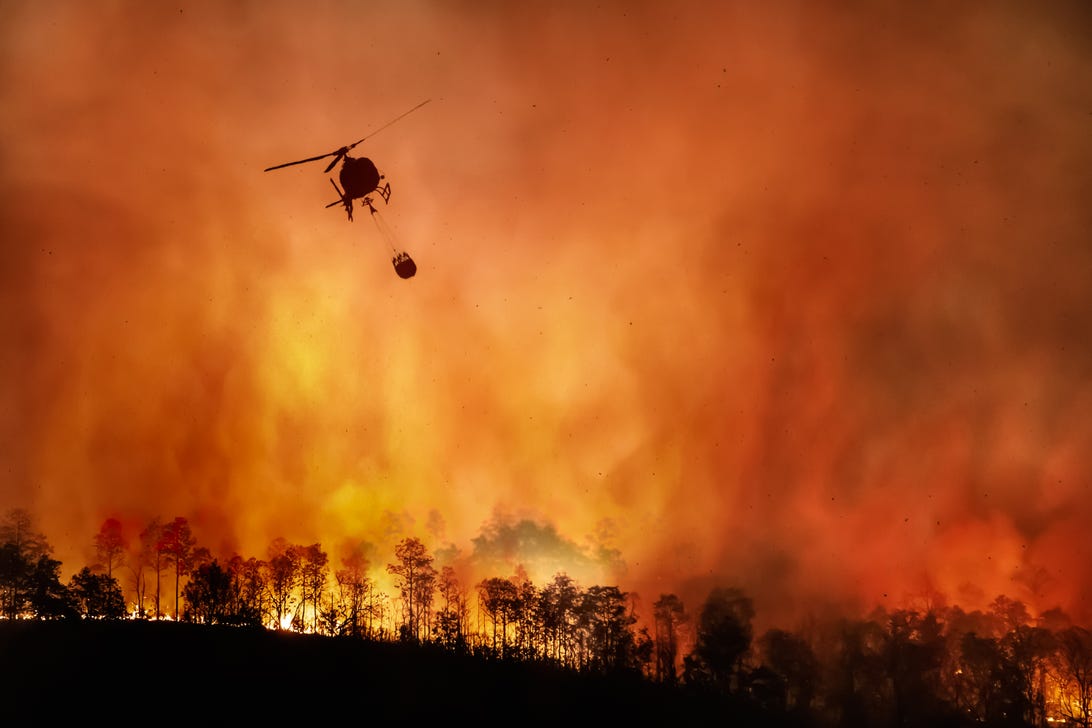
Climate change has exacerbated wildfires, but the worst is likely yet to come.
Getty ImagesAcross the contiguous US, fires have grown four times larger and three times more frequent since 2000, according to a new report published Wednesday in the journal Science Advances. These disasters are also encroaching into and damaging areas previously deemed safe from burning, the study found.
The news comes as bleak confirmation of what we’ve been witnessing for the last several years: Wildfires are rapidly increasing and spreading as a result of climate change.
Extreme, sudden changes in climate are responsible for fostering environmental conditions that enhance vulnerability to fires, the study’s authors say. Drought and dried organic matter, for instance, are both direct outcomes of global warming and precursors to wildfire — and these perfect storm risks are turning into reality much faster than once thought, they say.
“Projected changes in climate, fuel and ignitions suggest that we’ll see more and larger fires in the future. Our analyses show that those changes are already happening,” Virginia Iglesias, an environmental scientist with the Cooperative Institute for Research In Environmental Sciences’ Earth Lab and lead author of the paper, said in a statement.
Iglesias’ sentiment aligns with the devastation felt across the nation in the past three years. 2020, for instance, is notorious for raging wildfires that spread across California, 2021 saw 7.7 million acres burned across the US, and 2022 started off in horrific flames, with fires in Colorado labeled as the most damaging in state history.
“More and larger co-occurring fires are already altering vegetation composition and structure, snowpack and water supply to our communities,” Iglesias said. “This trend is challenging fire-suppression efforts and threatening the lives, health and homes of millions of Americans.”
More specifically, the study calculates that fires between 2011 and 2016 resulted in about $3.5 billion in property and crop damage, about $12.4 billion in suppression efforts, as well as the loss of 162 lives.
To reach their conclusions, Iglesias and fellow researchers analyzed federal fire history data and satellite imagery from over 28,000 fires occurring between 1984 and 2018. It was clear, they say, that there were about four times larger and much more frequent fires across every region in the contiguous US between 2005 and 2018, when compared with the previous years.
On the note of frequency, they found that the West and East saw fire frequency double, while the Great Plains saw fire frequency quadruple over the years studied. Further, the amount of land burned each year, they say, increased from a middle ground of 1,552 square miles to 5,502 square miles in the West and from 465 square miles to 1,295 square miles in the East.
Perhaps most alarming, though, was the researchers’ finding that fires are spreading into places in the US that hadn’t been victim to such calamity in the past.
“These convergent trends, more large fires plus intensifying development, mean that the worst fire disasters are still to come,” William Travis, the Earth Lab deputy director and co-author of the study, said in a statement.